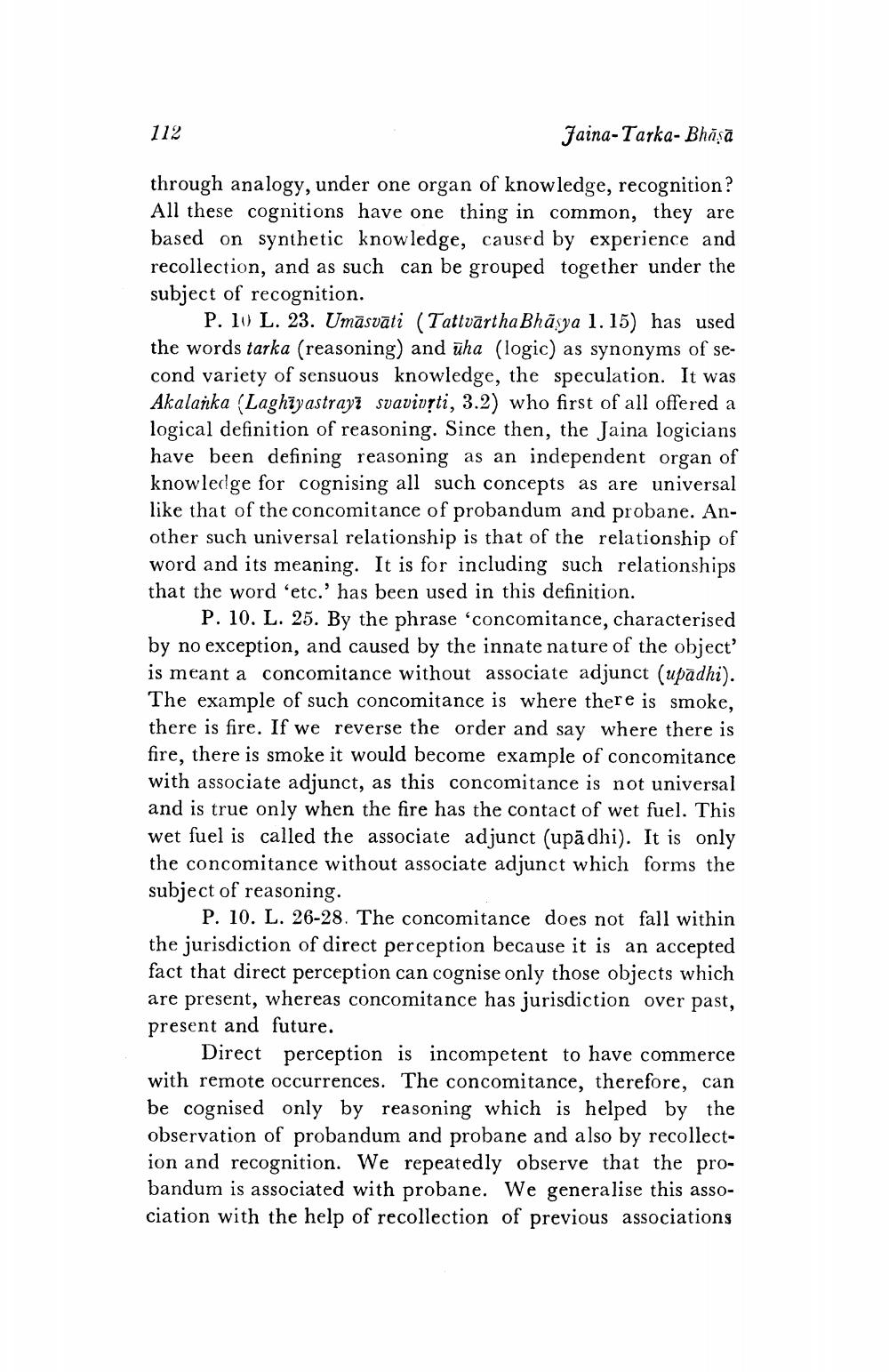________________
112
Jaina-Tarka- Bhāşā
through analogy, under one organ of knowledge, recognition? All these cognitions have one thing in common, they are based on synthetic knowledge, caused by experience and recollection, and as such can be grouped together under the subject of recognition.
P. 10 L. 23. Umāsvāti (Tattvārtha Bhāsya 1.15) has used the words tarka (reasoning) and üha (logic) as synonyms of second variety of sensuous knowledge, the speculation. It was Akalanka (Laghīyastraył svavivști, 3.2) who first of all offered a logical definition of reasoning. Since then, the Jaina logicians have been defining reasoning as an independent organ of knowledge for cognising all such concepts as are universal like that of the concomitance of probandum and probane. Another such universal relationship is that of the relationship of word and its meaning. It is for including such relationships that the word 'etc.' has been used in this definition.
P. 10. L. 25. By the phrase 'concomitance, characterised by no exception, and caused by the innate nature of the object is meant a concomitance without associate adjunct (upādhi). The example of such concomitance is where there is smoke, there is fire. If we reverse the order and say where there is fire, there is smoke it would become example of concomitance with associate adjunct, as this concomitance is not universal and is true only when the fire has the contact of wet fuel. This wet fuel is called the associate adjunct (upādhi). It is only the concomitance without associate adjunct which forms the subject of reasoning.
P. 10. L. 26-28. The concomitance does not fall within the jurisdiction of direct perception because it is an accepted fact that direct perception can cognise only those objects which are present, whereas concomitance has jurisdiction over past, present and future.
Direct perception is incompetent to have commerce with remote occurrences. The concomitance, therefore, can be cognised only by reasoning which is helped by the observation of probandum and probane and also by recollection and recognition. We repeatedly observe that the probandum is associated with probane. We generalise this association with the help of recollection of previous associations




